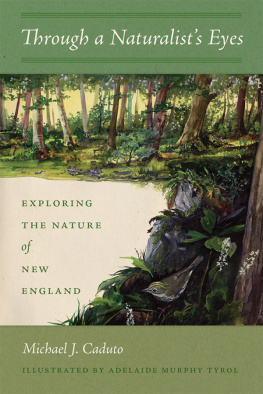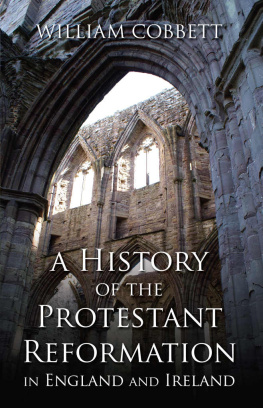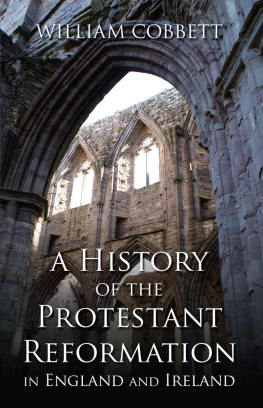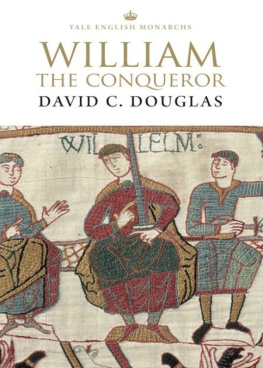Many people have helped me write this book. John Phillips first introduced me to the charms of the North Shore when we were callow young undergraduates. I still remember our crashing a frighteningly sophisticated New Years Eve party at the Crane estate. It soon became obvious we lacked the requisite bloodlines and had not just flown in from some fashionable European resort. But what I remembered most about Ipswich were the houses resting on drumlins surrounded by open marsh.
Ed Dick sold us our pink house, but we quickly learned that one is not actually the owner of an old house, as much as the temporary caretaker for the next generation. Chris Sammartino and Anne Fitzgerald were the former caretaker artists who planted such beguiling gardens outside and created such an eclectic mix of art and fantasy inside. The Peddricks, who are now our good neighbors across the street, provided stories about when Stacey and Chris grew up in the house and filled its halls with music when they were not on tour with the Fools. Slews of other caretakers inhabited the house, back to the original Captain John Smith in 1740.
I would also like to thank the voters of the town of Ipswich for their foresight in purchasing the Wendell Estate, whose magnificent fields and marshes will remain forever open. I enjoyed my intellectual tussles with the Conservation Commission over their plans to build a parking lot in the prime corner of the field. I have left some of my more curmudgeonly observations in the book to provide local flavor.
The New England Biolabs Foundation provided me with a small grant to study the behavior of bobolinks in the neighboring fields. Don Comb and Richard Grandoni first introduced me to the company, which will be such a welcome addition to the area. Fred Winthrop, Franz Ingel-finger, Rob Eblinger, and Erik Johnson provided invaluable assistance in my chapters about Cranes Beach, the deer hunt, Hog Island, piping plovers, and the sweet bay magnolias of Ravenswood Park. In writing about the Trustees properties I have given popular names precedence over strict orthodoxy. Besides, I find Crane Beach virtually impossible to pronounce, if not grammatically suspect, so use the more familiar Cranes Beach or simply Cranes instead. I use Hog Island over Choate Island purely out of historic and aesthetic preference. I hope the Trustees will not revoke my beach permit for such transgressions.
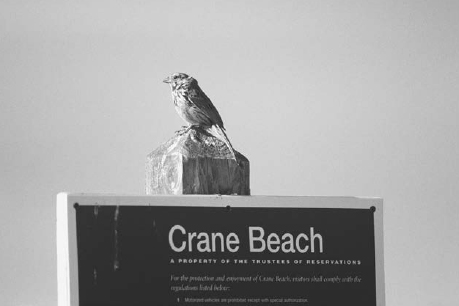
Crane Beach? Cranes Beach!
I thank Charlie Shurcliff for his vast knowledge of all things to do with Cranes Beach and Argilla Road and deigning, on occasion, to visit the other neck. I thank Bill Wasserman for his goodwill, his politics, and his research on Lyme disease.
Phil Kent introduced me to the clam flats, and the Ipswich Shellfish Company invited me to visit its immaculate shucking facility. Lisa Manzi, Kerry Mackin, Jim Berry, Bob Gravino, and Jim Graffum provided help on vernal pools, the Ipswich River, and the Wendell Estate. Bob Oldale and Jim Skehan provided assistance on geology, and Bernd Heinrich and the intrepid students in his winter ecology course at the University of Vermont collected much of the data used in my winter chapters. If I have made any mistakes it is because I am a misplaced Cape Codder still getting used to the cooler waters of the North Shore.
Finally, I would like to thank Kristina and Chappell for sharing our house, our life, and our adventures amidst the marshes of Ipswich Bay.
Chapter 1
Spring Dawn
An Awakening
(May 4, 2003)
It is 5:30. A cardinal sings from the limb of a cherry tree and sparrows twitter in the nearby wisteria. The sun has yet to rise and I have no intention of getting up. But nature calls. No, not the ethereal sort, not the poetic call of nature that should come with the first day of spring, but the simple call of nature that comes from a distended bladder. Whatever the reason, the result is the same. Im up and the fields are covered with a thin layer of frost and a blanket of fog nestles in the valleys and swales of the distant pasture. I grab my cameras and head outside.
There is no windno sounds save for the plaintive call of a killdeer in the distance. I make my way toward a shallow slough at the edge of our pasture. My footsteps leave a dark trail through the fragile whiteness of frost. Filaments of mist waft through blades of canary grass emerging from the wetlands. Each new green shoot casts an exact reflection of itself in the quiet shallow waters. A flock of glossy ibis probe the soft mud with their gracefully curving bills and a greater yellowlegs bobs and weaves on the far shore. The slough reflects the erect head of a Canada goose standing sentinel beside his mate.
I feel like I am walking beside a tundra pool high above the Arctic Circle. Frost edges the creeks that meander through the nearby marsh and scudding blankets of fog obliterate the outside world. But the call of a distant pheasant breaks the illusion. I am walking through an extraordinary plot of meadows, marshes, pastures, and islands only forty miles north of Boston.
But it has been an unusually cold and long winter. Snow has lain on the ground from Thanksgiving to Easter. Rabbits and deer have gnawed the bark off the Russian olives invading an old apple orchard. By December, the ice was so thick that neighbors dragged their fishing shacks out of ancient barns and planted them on the Ipswich River. It was the first time in twenty years that the ice had been thick enough to support the single room fishing houses.
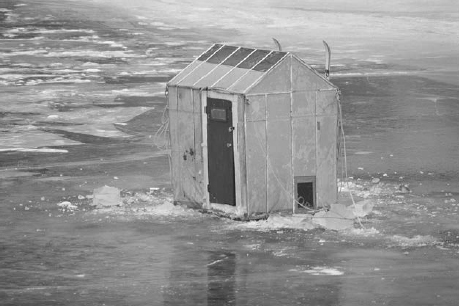
Fishing shacks on the Ipswich River.
In late March a harrier had started to sit in the black locust beside our house. The large hawk was obviously hungry and emaciated. The snow had been so deep that he had been unable to catch the mice and voles that make up the bulk of his wintertime diet. We watched him as he sat hunched over, clinging to the same branch day after day as the snow swirled about his head. He moved as little as possible to conserve energy. We wondered if he would survive the winter.
Beneath him, meadow voles were scurrying happily through their warm humid tunnels deep beneath the snow. The tunnels were well stocked with caches of seeds and grasses the voles had harvested the summer before. While the voles were enjoying the pleasures of their subnivean world, snow was swirling over their nemesis above.
But by early April the tables had finally turned. I discovered feather marks in the snow where the harrier had swooped down on a vole who had not realized that the snow had become too thin to mask his quiet squeaks. Even in May a six-inch bank of ice still lurked in the phragmites-filled swale beside our house.
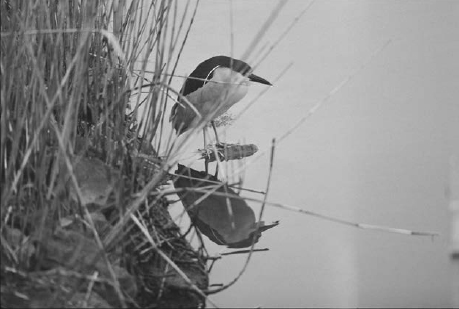
A night heron.
Yet with the warmth of this rising sun we seem to pass from winter to spring. It takes only fifteen minutes for the sun to melt the frost-covered fields and turn them into bright green spring pastures. Each blade of grass once etched with frost is now bedecked with pendant jewels of sun reflecting dew.
But there is poignancy in these wetlands. I have photographed more than twenty species of shorebirds in this slough. But it may soon be drained to protect a neighbors driveway. I cant dispute the neighbors right to protect his driveway, but New England will lose one of its premier spots to watch and photograph waterfowl. Another exquisite little gem of nature will have been nickeled and dimed to death.




